 W
WThe English landscape garden, also called English landscape park or simply the English garden, is a style of "landscape" garden which emerged in England in the early 18th century, and spread across Europe, replacing the more formal, symmetrical jardin à la française of the 17th century as the principal gardening style of Europe. The English garden presented an idealized view of nature. Created and pioneered by William Kent, the “informal” garden style originated as a revolt against the architectural garden and drew inspiration from paintings of landscapes by Claude Lorrain and Nicolas Poussin. The English garden usually included a lake, sweeps of gently rolling lawns set against groves of trees, and recreations of classical temples, Gothic ruins, bridges, and other picturesque architecture, designed to recreate an idyllic pastoral landscape. The work of Lancelot "Capability" Brown was particularly influential. By the end of the 18th century the English garden was being imitated by the French landscape garden, and as far away as St. Petersburg, Russia, in Pavlovsk, the gardens of the future Emperor Paul. It also had a major influence on the form of the public parks and gardens which appeared around the world in the 19th century. The English landscape garden was centred on the English country house.
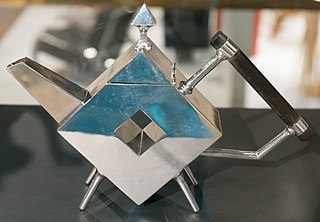 W
WThe Anglo-Japanese style developed in the United Kingdom though the Victorian period and early Edwardian period from approximately 1851 to 1910's, when a new appreciation for Japanese design and culture influenced how designers and craftspeople made British art, especially the decorative arts and architecture of England, covering a vast array of art objects including ceramics, furniture and interior design. Important centres for design included London and Glasgow.
 W
WBadminton House is a large country house and Grade I Listed Building in Badminton, Gloucestershire, England, and has been the principal seat of the Dukes of Beaufort since the late 17th century, when the family moved from Raglan Castle, which had been ruined in the English Civil War. The house gives its name to the sport of badminton. The gardens and park surrounding the house are Grade I on the Register of Historic Parks and Gardens.
 W
WBarningham Hall is a Grade I listed building which stands in the grounds of the estate called Barningham Winter. Both the hall and estate privately owned. The house is close to the village of Matlask in the English County of Norfolk in the United Kingdom. The house was built for Sir Edward Paston in 1612 although the house seen today is the result of renovations, alterations and enlargement carried out under the control and design of Humphry Repton and his architect son John Adey Repton in 1805.
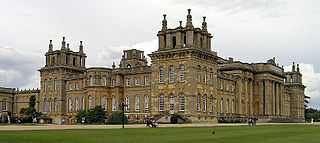 W
WBlenheim Palace is a monumental country house in Woodstock, Oxfordshire, England. It is the principal residence of the Dukes of Marlborough, and the only non-royal, non-episcopal country house in England to hold the title of palace. The palace, one of England's largest houses, was built between 1705 and 1722, and designated a UNESCO World Heritage Site in 1987.
 W
WBowood is a grade I listed Georgian country house with interiors by Robert Adam and a garden designed by Lancelot "Capability" Brown. It is adjacent to the village of Derry Hill, halfway between Calne and Chippenham in Wiltshire, England. The greater part of the house was demolished in 1956.
 W
WLancelot Brown, more commonly known as Capability Brown, was an English landscape architect. He is remembered as "the last of the great English 18th-century artists to be accorded his due" and "England's greatest gardener".
 W
WDecimus Burton was one of the foremost English architects and urban designers of the 19th century. He was the foremost Victorian architect in the Roman revival, Greek revival, Georgian neoclassical and Regency styles. He was accomplished also in the cottage orné, picturesque and neogothic styles. He was a founding fellow and, later, vice-president, of the Royal Institute of British Architects, and architect to the Royal Botanic Society from 1840 and an early member of the Athenaeum Club, London, whose club premises he designed and which the company of father, James Burton, the pre-eminent property developer of Georgian London, built. Modern architectural historians Guy Williams (1990) and Dana Arnold (2004) contend that Burton's contribution to architecture has been underestimated: as a consequence of the misattribution to John Nash of many of his works; of his vituperation by his neo-gothic rival, Augustus Pugin; and of the consequent retention of his archives by his family.
 W
WCastle Howard is a stately home in North Yorkshire, England, within the civil parish of Henderskelfe, located 15 miles (24 km) north of York. It is a private residence and has been the home of the Carlisle branch of the Howard family for more than 300 years. Castle Howard is not a fortified structure, but the term "castle" is sometimes used in the name of an English country house that was built on the site of a former castle.
 W
WChatsworth House is a stately home in Derbyshire, England, in the Derbyshire Dales 3.5 miles (5.6 km) north-east of Bakewell and 9 miles (14 km) west of Chesterfield. The seat of the Duke of Devonshire, it has been home to the Cavendish family since 1549. It stands on the east bank of the River Derwent and looks across to low hills between the Derwent and Wye valleys. The house is set in expansive parkland and backed by wooded, rocky hills that rise to heather moorland. It contains major collections of paintings, furniture, Old Master drawings, neoclassical sculptures, books and other artefacts. Chatsworth has been chosen in several surveys as Britain's favourite country house.
 W
WChiswick House is a Palladian villa in Chiswick, in the west of London, England. A "glorious" example of Neo-Palladian architecture in London, the house was built and designed by Richard Boyle, 3rd Earl of Burlington (1694-1753), and completed in 1729. The house and gardens occupy 26.33 hectares ; the gardens were created mainly by architect and landscape designer William Kent. The garden is one of the earliest examples of the English landscape garden.
 W
WClaremont Landscape Garden, just outside Esher, Surrey, England, is one of the earliest surviving gardens of its kind of landscape design, the English Landscape Garden — still featuring its original 18th-century layout. The garden is Grade I listed on the Register of Historic Parks and Gardens.
 W
WEuston Hall is a country house, with park by William Kent and Capability Brown, located in Euston, a small village in Suffolk located just south of Thetford, England. It is the family home of the Dukes of Grafton.
 W
WThe term ferme ornée as used in English garden history derives from Stephen Switzer's term for 'ornamental farm'. It describes a country estate laid out partly according to aesthetic principles and partly for farming. During the eighteenth century the original ferme ornée was Woburn Farm, made by Philip Southcote, who bought the property in 1734. William Shenstone's garden at The Leasowes was also a ferme ornée. Marie Antoinette made a later example at Versailles in the form of the Hameau de la Reine, created between 1783 and 1787, but it was much more for pleasure than for food production. The Dessau-Wörlitz Garden Realm was said to be the largest ferme ornée in 18th-century Europe. The most complete surviving example is said to be Larchill near Kilcock, Ireland.
 W
WGoldney Hall is a self-catered hall of residence in the University of Bristol. It is one of three in the Clifton area of Bristol, England.
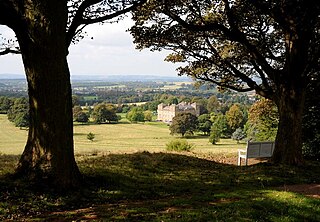 W
WHagley Park is the estate of Hagley Hall in Worcestershire, England. The grounds comprise 350 acres (1.4 km2) of undulating deer park on the lower slopes of the Clent Hills. They were redeveloped and landscaped between about 1739 and 1764, with follies designed by John Pitt, Thomas Pitt, James "Athenian" Stuart, and Sanderson Miller. Planned as part of an 18th-century enthusiasm for landscape gardening, especially among poets, the park brought many distinguished literary visitors to admire the views, as well as poetic tributes to their beauty and Classical taste.
 W
WHarewood House is a country house in Harewood, West Yorkshire, England. Designed by architects John Carr and Robert Adam, it was built, between 1759 and 1771, for Edwin Lascelles, 1st Baron Harewood, a wealthy West Indian plantation and slave-owner. The landscape was designed by Lancelot "Capability" Brown and spans 1,000 acres (400 ha) at Harewood.
 W
WHidcote Manor Garden is a garden in the United Kingdom, located at the village of Hidcote Bartrim, near Chipping Campden, Gloucestershire. It is one of the best-known and most influential Arts and Crafts gardens in Britain, with its linked "rooms" of hedges, rare trees, shrubs and herbaceous borders. Created by Lawrence Johnston, it is owned by the National Trust and is open to the public.
 W
WHoning Hall is a Grade II* listed building which stands in a small estate close to the village of Honing in the English county of Norfolk within the United Kingdom. It was built in 1748 for a wealthy Worstead weaver called Andrew Chamber.
 W
WGertrude Jekyll was a British horticulturist, garden designer, craftswoman, photographer, writer and artist. She created over 400 gardens in the United Kingdom, Europe and the United States, and wrote over 1,000 articles for magazines such as Country Life and William Robinson's The Garden. Jekyll has been described as "a premier influence in garden design" by British and American gardening enthusiasts.
 W
WSir Geoffrey Allan Jellicoe was an English architect, town planner, landscape architect, garden designer, lecturer and author. His strongest interest was in landscape and garden design.
 W
WLound Hall is a country house which sits on the outskirts of Bothamsall village, Nottinghamshire, England. The current house was built in the Georgian style in the 1930s for Sir Harald Peake, a mining company director. There has been a manor house on the site since the 1700s. The hall was used as an orthopaedic hospital during World War II, and later became a training centre for the National Coal Board as well as a mining museum. It has now reverted to private ownership.
 W
WMunstead Wood is a Grade I listed house and garden in Munstead Heath, Busbridge on the boundary of the town of Godalming in Surrey, England, 1 mile (1.6 km) south-east of the town centre. The garden was created first, by garden designer Gertrude Jekyll, and became widely known through her books and prolific articles in magazines such as Country Life. The Arts and Crafts style house, in which Jekyll lived from 1897 to 1932, was designed by architect Edwin Lutyens to complement the garden.
 W
WNewton Park is an 18th-century grade I listed country house in the parish of Newton St Loe, Somerset, England, situated 4 miles (6.4 km) west of Bath.
 W
WPetworth House in the parish of Petworth, West Sussex, England, is a late 17th-century Grade I listed country house, rebuilt in 1688 by Charles Seymour, 6th Duke of Somerset, and altered in the 1870s to the design of the architect Anthony Salvin. It contains intricate wood-carvings by Grinling Gibbons (d.1721). It is the manor house of the manor of Petworth. For centuries it was the southern home for the Percy family, Earls of Northumberland. Petworth is famous for its extensive art collection made by George Wyndham, 3rd Earl of Egremont (1751-1837), containing many works by his friend J. M. W. Turner. It also has an expansive deer park, landscaped by Capability Brown, which contains the largest herd of fallow deer in England.
 W
WHumphry Repton was the last great English landscape designer of the eighteenth century, often regarded as the successor to Capability Brown; he also sowed the seeds of the more intricate and eclectic styles of the 19th century. His first name is often incorrectly rendered "Humphrey". In 2018, the bicentenary of Repton's death, several groups held events throughout the United Kingdom to celebrate his work.
 W
WThomas Robins the Elder (1715/16–1770) was an English artist known for his depictions of English country houses and their gardens. His work has particular historical value as he documented many Rococo gardens that have since disappeared.
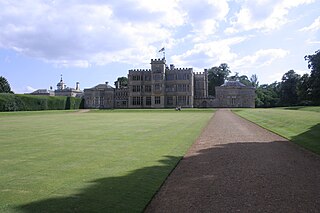 W
WRousham House is a country house at Rousham in Oxfordshire, England. The house, which has been continuously in the ownership of one family, was built circa 1635 and remodelled by William Kent in the 18th century in a free Gothic style. Further alterations were carried out in the 19th century.
 W
WSandleford Priory is a largely 18th century country house at Sandleford in the civil parish of Greenham in the English county of Berkshire. It incorporates the chapel of a former monastery and is currently the home of St Gabriel's School.
 W
WA Shakespeare garden is a themed garden that cultivates some or all of the 175 plants mentioned in the works of William Shakespeare. In English-speaking countries, particularly the United States, these are often public gardens associated with parks, universities, and Shakespeare festivals. Shakespeare gardens are sites of cultural, educational, and romantic interest and can be locations for outdoor weddings.
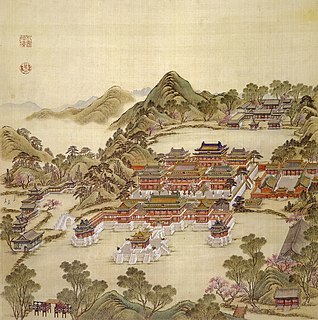 W
WSharawadgi or sharawaggi is a style of landscape gardening or architecture in which rigid lines and symmetry are avoided to give the scene an organic, naturalistic appearance. This concept was influential in English landscape gardening in the 18th century, starting with Sir William Temple's essay Upon the gardens of Epicurus, and reports from China of the Jesuit missionary, Father Attiret. Sir William Temple first used the word sharawadgi in discussing the Chinese idea of beauty without order in garden design, in contrast to the straight lines, regularity, and symmetries then popular in European gardens. The style indicates a certain irregularity in the design.
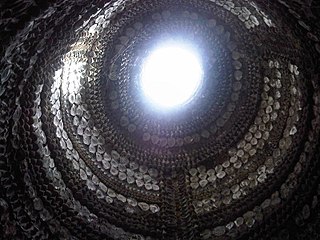 W
WThe Shell Grotto is an ornate subterranean passageway shell grotto in Margate, Kent. Almost all the surface area of the walls and roof is covered in mosaics created entirely of seashells, totalling about 2,000 square feet (190 m2) of mosaic, or 4.6 million shells. It was discovered in 1835, but its age and purpose remain unknown. The grotto is a Grade I-listed building and is open to the public.
 W
WSheringham Hall is a Grade II* listed building which stands in the grounds of Sheringham Park which is in the care of the National Trust. The house is close to the village of Upper Sheringham in the English County of Norfolk in the United Kingdom. The hall was built on the instructions of Abbot and Charlotte Upcher who engaged the architect and landscape designer Humphry Repton and his son John Adey Repton to build the house and to present designs for the surrounding parklands. Humphry worked on the landscape and John designed the hall. The house is privately owned is not open to the public but can be viewed from the surrounding parkland.
 W
WShute House, Donhead St Mary, Wiltshire, England is a former rectory, now a private home, notable for its gardens designed by Geoffrey Jellicoe. Situated about 2 1⁄2 miles (4.0 km) east of Shaftesbury, the house and garden are at the very southern edge of Wiltshire, on the border with Dorset. The house is a Grade II listed building, while the gardens have a higher Grade II* listing on Historic England's Register of Historic Parks and Gardens. They have been described as Jellicoe's finest work. He worked at Shute House between 1969 and 1983 for the then owners, Michael and Anne Tree, returning to revitalise the garden for new owners in the mid-1990s, in what became his final work before his death in 1996.
 W
WSissinghurst Castle Garden, at Sissinghurst in the Weald of Kent in England, was created by Vita Sackville-West, poet and writer, and her husband Harold Nicolson, author and diplomat. It is among the most famous gardens in England and is designated Grade I on Historic England's register of historic parks and gardens. It was bought by Sackville-West in 1930, and over the next thirty years, working with, and later succeeded by, a series of notable head gardeners, she and Nicolson transformed a farmstead of "squalor and slovenly disorder" into one of the world's most influential gardens. Following Sackville-West's death in 1962, the estate was donated to the National Trust for Places of Historic Interest or Natural Beauty. It is one of the Trust's most popular properties, with nearly 200,000 visitors in 2017.
 W
WStourhead is a 1,072-hectare (2,650-acre) estate at the source of the River Stour in the southwest of the English county of Wiltshire, extending into Somerset. The estate is about 4 km northwest of the town of Mere and includes a Grade I listed 18th-century Palladian mansion, the village of Stourton, gardens, farmland, and woodland. Stourhead has been part-owned by the National Trust since 1946.
 W
WStowe House is a grade I listed country house in Stowe, Buckinghamshire, England. It is the home of Stowe School, an independent school and is owned by the Stowe House Preservation Trust who have to date spent more than £25m on the restoration of the house. Stowe House is regularly open to the public. The gardens, a significant example of the English garden style, along with part of the Park, passed into the ownership of The National Trust in 1989 and are open to the public. The site saw 232,056 visitors during 2019. The parkland surrounding the gardens is open 365 days a year. National Trust members have free access to the gardens but there is a charge for all visitors to the house which goes towards the costs of restoring the building. The gardens and most of the parkland are listed grade I separately from the House.